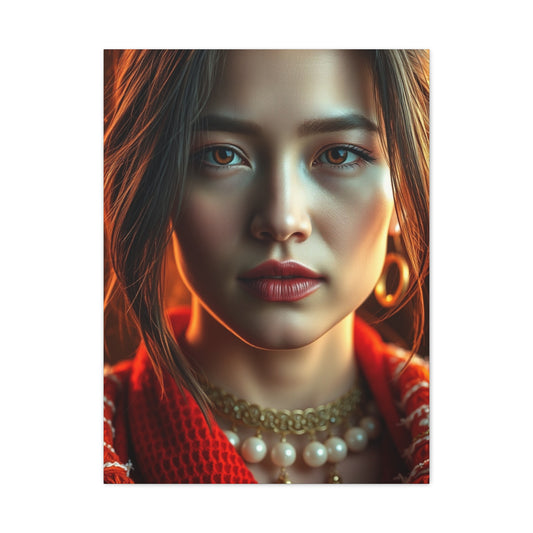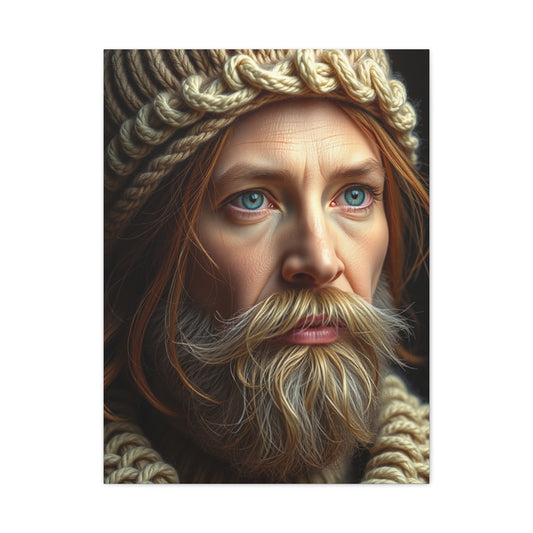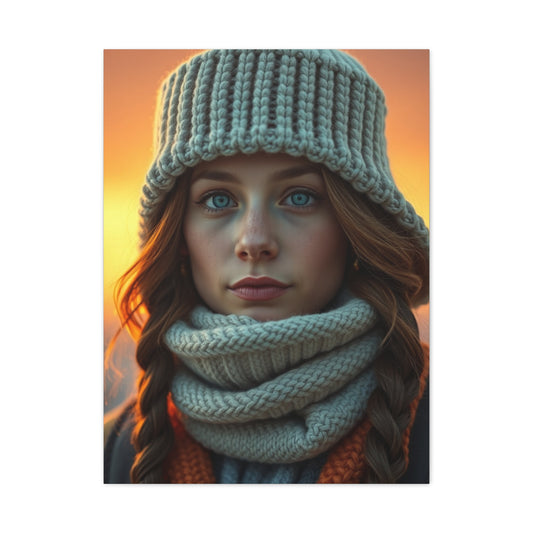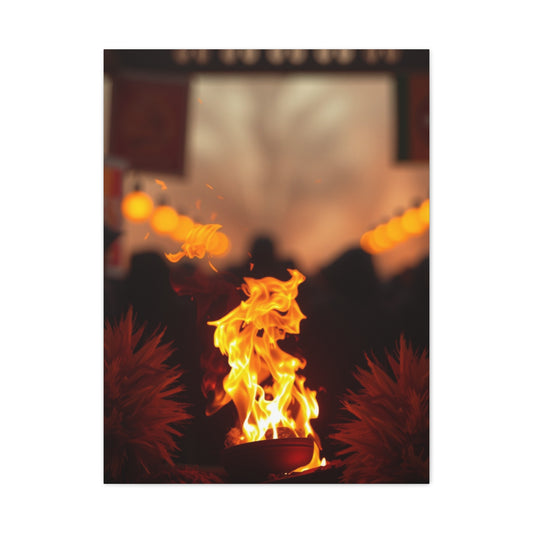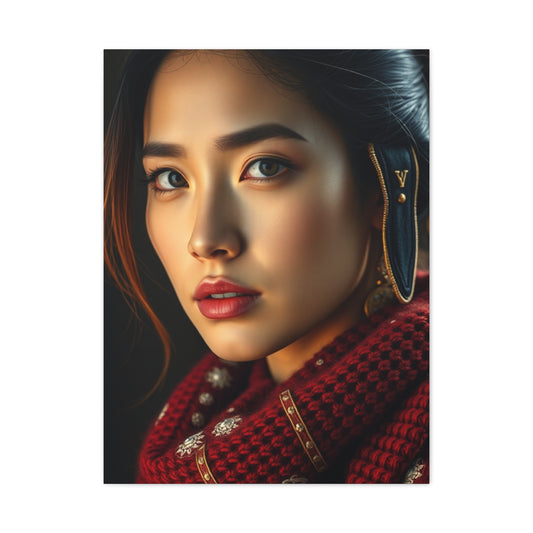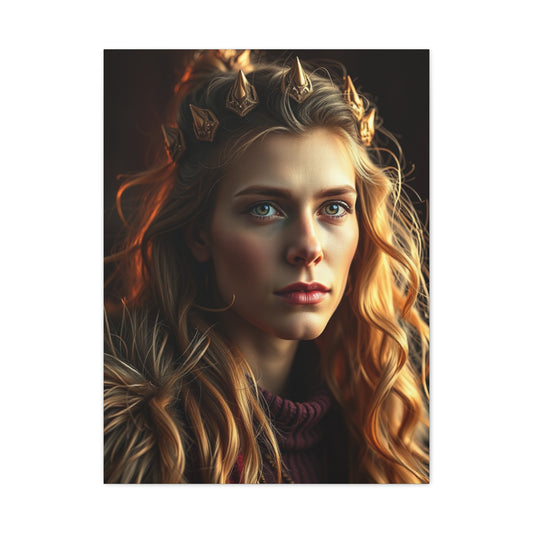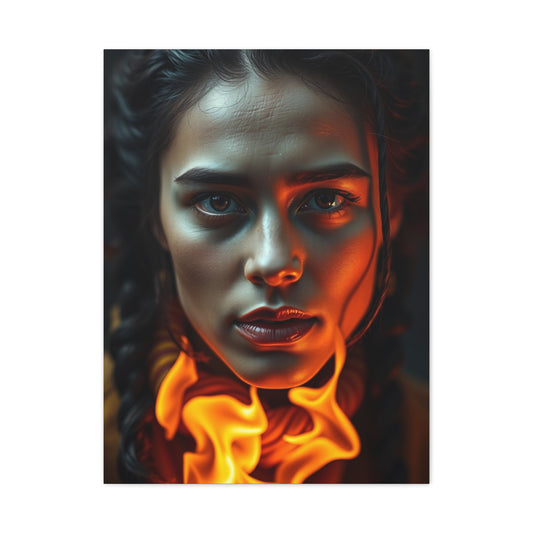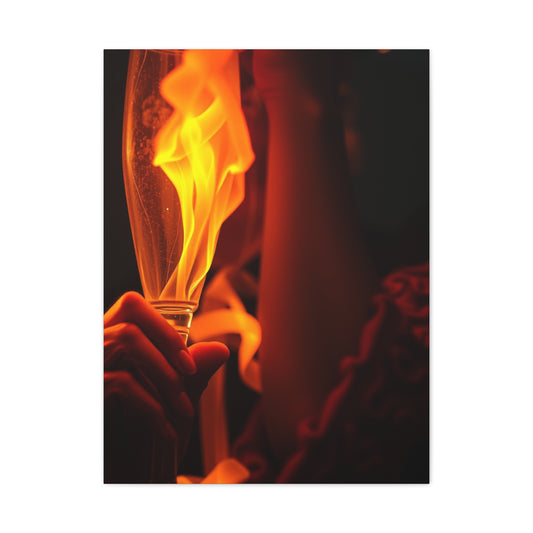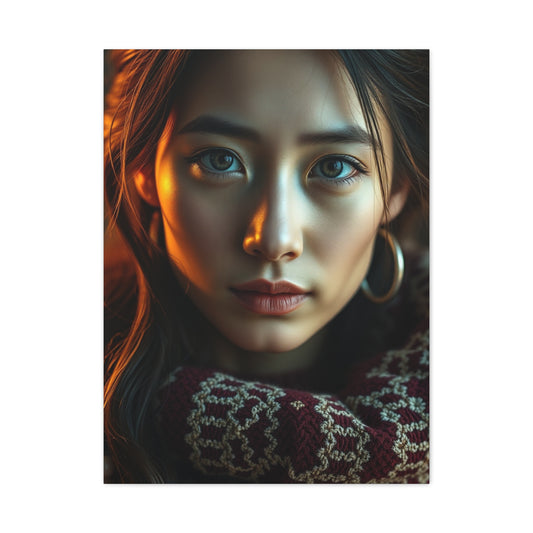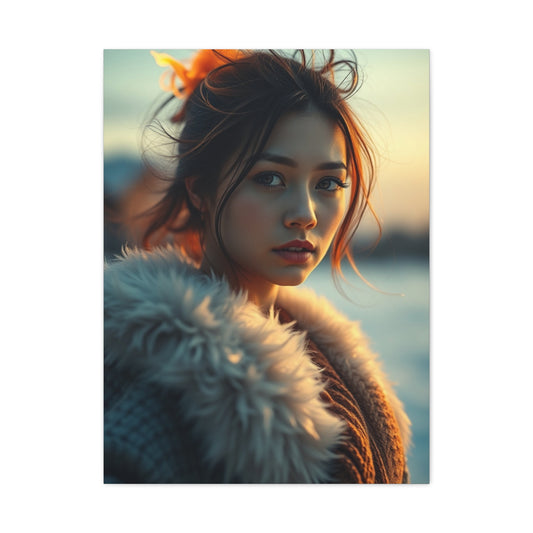Styling Wall Art for Warm, Earthy Interiors
Warm-toned walls, ranging from terracotta and clay to beige and soft cinnamon, have an inherent ability to ground a room in warmth and timelessness. These colors echo nature’s most enduring palette—sunbaked stone, autumn leaves, and the glow of candlelight. When thoughtfully paired with the right art, these walls become more than a backdrop; they create an immersive atmosphere that feels both personal and inviting. The concept of styling art for warm, earthy walls rests on balance, harmony, and storytelling.
Understanding Warm, Earthy Wall Colors
Warm, earthy tones are more than just paint on a wall—they are an expression of nature inside the home. Terracotta reflects the baked richness of desert landscapes, clay tones suggest an old-world groundedness, and beige provides a calming neutrality. These hues are versatile because they are rooted in elements we naturally associate with comfort and belonging. They do not simply decorate a space but shape the overall feeling of a room. To understand how to style art for these walls, it is necessary to first grasp their emotional influence. Warm tones evoke security, nostalgia, and connection. A terracotta wall may feel enveloping, like the embrace of a rustic Mediterranean courtyard. A cinnamon or caramel tone can remind us of autumn evenings, while a pale beige wall reflects the simplicity of stone and sand. Because they already carry these strong associations, the art chosen to complement them must respond rather than compete. Photographs, paintings, or prints that either echo or contrast these natural shades become part of a conversation between surface and subject.
The Role of Light and Color in Styling
Light is one of the most powerful tools when pairing artwork with warm walls. Sunlight, particularly during golden hour, magnifies the glow of terracotta and clay. Artificial lighting with a warm bulb can further enhance earthy tones. This makes artworks that capture natural warmth—such as sunset photography, glowing skylines, or autumnal forests—ideal companions. When choosing art, it is important to recognize that the color of a wall is not static. It changes with the time of day, the angle of sunlight, and the shadows cast by furniture. A cinnamon wall at sunrise may appear soft and delicate, while at sunset it can deepen into a bold, enveloping tone. Art should harmonize with this dynamic quality, offering visual continuity throughout these shifts. Color theory also plays a role. Warm walls sit close to oranges, reds, and yellows on the color wheel, which makes analogous colors (those near them) feel seamless and harmonious. For example, a clay wall paired with a print of a golden skyline will feel cohesive because both draw from similar warmth. On the other hand, complementary contrast—pairing a terracotta wall with artwork that contains hints of teal or cool blue—can create a striking balance. This does not disrupt the earthy feeling but instead provides relief, preventing the room from becoming visually heavy.
Creating Tonal Harmony
Harmony between wall color and artwork often comes from subtle layering of tones. A beige wall might be enriched by a photograph with sandstone, cream, and muted gold elements. A deeper terracotta wall benefits from artwork that includes echoes of rust, burnt sienna, or bronze. This tonal dialogue is what makes art feel like it belongs in a space rather than being imposed upon it. Texture within the artwork also contributes to this sense of belonging. Images that feature brick facades, weathered stone, or wood grain mirror the tactile quality of earthy tones. When viewers encounter these visual textures, they unconsciously recognize a connection between the wall’s grounded color and the print’s surface story. This alignment is less about matching exact shades and more about creating a shared mood, where wall and artwork feel as though they are extensions of one another.
The Emotional Story of Warm Walls
Ultimately, styling art for earthy walls is not about technical design rules but about the story you want your space to tell. Warm colors carry emotional weight. They whisper of memory, comfort, and continuity. When paired with art that shares these emotional notes, a room becomes a sanctuary. A clay-colored wall with a print of a city skyline bathed in golden hour light does not simply look appealing—it resonates with a feeling of belonging. A beige wall with artwork that depicts open skies and soft sunlight tells a story of calm and expansiveness. These combinations invite those who enter the space to not only see but feel. This is why the process of styling art must consider mood alongside palette. The right artwork is not chosen only because it looks good; it is chosen because it feels inevitable, like it was meant to live on that wall.
The Interplay of Texture and Material
When styling art for warm, earthy wall colors, texture plays as vital a role as color. While a clay or terracotta wall naturally evokes groundedness, the surface qualities of the art you display against it can either heighten or diminish that feeling. A print on smooth glossy paper, for example, might create a sharp contrast with the matte quality of an earthy wall, while a canvas print or a framed photograph with a subtle fabric matting can harmonize more seamlessly. Materials matter because earthy tones come from the physical world—soil, stone, bark, and clay all have tangible textures that the eye associates with touch.
Consider how a sandstone-colored wall interacts with an artwork featuring weathered brick facades or rusted architectural elements. The textures feel consistent, drawing the wall and the print into one conversation. Similarly, a cinnamon wall can carry the warmth of aged wood or bronze tones in an image, creating layers of visual richness. The principle is not about making everything match exactly but about finding a shared visual language where texture creates depth and authenticity.
Texture also operates within the imagery of the artwork itself. A photograph of a rugged desert landscape carries its own tactile story—rough stone, shifting sand, jagged cliffs—that echoes the essence of earthy walls. Displaying such a piece against terracotta creates resonance, a harmony between wall and art that transcends simple color coordination. This is why many designers recommend artwork that feels lived-in, organic, or weathered when styling spaces with warm tones. These works do not appear imposed; they belong as if they were uncovered within the very fabric of the room.
Light as a Transformative Partner
Light is not only an external factor that influences wall color; it is also a partner in shaping how artwork is perceived. Warm walls already glow with ambient richness, but when illuminated correctly, they can create an environment where art becomes alive. Golden light, particularly in the late afternoon, casts shadows and highlights that deepen earthy hues and enhance their natural warmth. Artwork that captures golden hour moments—whether through photography of city skylines, landscapes, or even abstract forms bathed in amber tones—reflects this radiance.
In open living rooms or dining areas where natural light is abundant, a beige wall with a print of glowing clouds or soft sunsets will appear almost luminous. The interplay between the natural sunlight, the earthy wall tone, and the chosen artwork creates a shifting, dynamic scene that changes with the hours. This makes the space feel less static and more responsive to daily rhythms. In contrast, spaces with limited natural light can benefit from intentional artificial lighting. Soft, warm bulbs directed toward art pieces not only enhance the artwork’s details but also reinforce the warmth of the walls themselves. The result is an environment where the wall, the art, and the light combine to form a single immersive experience.
The transformative role of light also means that art should be chosen with an understanding of how it will appear in different conditions. A print dominated by deep golds and coppers may feel radiant in daylight but can take on a moodier tone at night. This duality is not a drawback but an advantage, offering multiple layers of expression in a single piece. When paired with walls that already shift subtly with light, the room becomes an ever-changing canvas of moods.
Balancing Contrast and Cohesion
One of the challenges of styling art against warm, earthy walls is achieving balance between cohesion and contrast. Too much similarity can cause the art to disappear into the wall, while too much contrast risks making the art feel detached. The solution lies in careful layering. Cohesion can be achieved by ensuring the artwork shares tonal qualities with the wall color. A terracotta wall works beautifully with a photograph that contains hues of brick or rust, while a beige wall feels harmonious with a print that includes sandy neutrals or golden undertones.
Contrast, on the other hand, prevents the room from becoming visually heavy or monotonous. For example, a clay-colored wall paired with artwork featuring soft fog, pale skies, or silvery water introduces lightness that counterbalances the wall’s density. This approach is particularly effective in rooms where the earthy tones are deep and commanding. A skyline photograph with pale clouds over a golden-lit city can calm the weight of a terracotta wall without diminishing its strength.
The balance between cohesion and contrast is also emotional. Too much similarity can create a space that feels closed in or overly saturated with warmth. Contrast introduces breathing room, allowing the eye to rest. When art carries both harmony and relief—by echoing the wall’s tones while introducing new light or texture—it feels inevitable, as though it belongs without overwhelming.
Using Art to Define Space
Warm walls are inherently expansive. In open-concept layouts, beige or terracotta can stretch across large areas, creating continuity but sometimes lacking definition. Art serves as a visual anchor, offering the eye focal points that organize space. A large cityscape in gold and copper tones displayed over a sofa, for example, not only complements a tan wall but also defines the living area within an open room. Similarly, a series of smaller prints with sandstone and bronze tones can delineate a dining space, drawing subtle boundaries without physical partitions.
The use of art as an anchor is especially important in larger rooms where warm tones, though inviting, can appear overwhelming if left unbalanced. Strong prints with bold light or architectural depth provide gravity, much like a rug grounds a seating area. On beige walls, glowing skylines or rustic architectural photographs add both warmth and structure, pulling the space together. In contrast, smaller rooms with clay or cinnamon walls can benefit from lighter, airier prints. These create the sense of space expanding beyond the walls, balancing the intensity of the warm tones.
The concept of anchoring through art extends to emotional definition as well. A wall color may provide a general mood—cozy, nostalgic, grounded—but it is the art that refines and personalizes that mood. Two different prints on the same cinnamon wall can tell very different stories: one of vibrant urban life if the artwork depicts a glowing skyline, or one of serene memory if the piece captures a quiet twilight landscape. Art does not simply define space physically; it shapes the emotional territory of the room.
Storytelling Through Color and Mood
The power of warm walls lies not only in their aesthetic qualities but in the stories they tell. These hues are deeply connected to memory, nature, and emotion. When art continues this storytelling, the result is a layered environment that resonates with depth. Beige walls suggest calm and openness, inviting prints that evoke air, light, and simplicity. A photograph of a calm river or a soft cloudy sky will not only complement but extend the story of serenity.
Terracotta walls, on the other hand, lean into nostalgia and richness. They recall Mediterranean courtyards, desert landscapes, and the warmth of ancient materials. Art chosen for such walls can heighten this sense of history and groundedness. A print of weathered stone steps, a glowing urban street, or a skyline cast in golden hour tones reinforces the narrative of timeless belonging.
The interplay of wall color and artwork is therefore more than decorative; it is deeply emotional. Twilight images on cinnamon walls tell stories of transition and reflection, while glowing cityscapes on beige walls suggest movement, connection, and continuity. Each pairing builds a mood, not through isolated choices but through dialogue between wall and art.
The Subtle Art of Belonging
When done well, styling art for warm, earthy walls does not feel like an act of design but like a process of discovery. The right artwork does not simply fit the wall—it feels as though it has always been meant to hang there. This sense of inevitability is what elevates a space from visually pleasing to emotionally resonant. The walls and the art speak the same language, one of warmth, memory, and connection.
A clay-colored wall holding a golden skyline print hums with harmony, while a beige wall paired with soft skies breathes calmness into the room. In both cases, the effect is not forced. It is a natural extension of the environment, an unfolding of what was already present within the tones of the walls themselves. This sense of belonging is the ultimate goal. When art does not merely decorate but integrates, the space becomes more than functional. It becomes a home that reflects identity, memory, and emotion.
Styling Art in Living Rooms with Warm, Earthy Walls
The living room is often the heart of the home, the space where people gather, converse, and unwind. When walls are dressed in warm, earthy tones like terracotta, cinnamon, or beige, they already provide a natural sense of comfort and grounding. Yet it is the art chosen for this room that elevates the atmosphere, turning the living area into a place of memory, connection, and inspiration.
In living rooms with beige or sand-colored walls, artwork that introduces tonal variety can create depth without overwhelming the calmness of the space. A print featuring a city skyline bathed in golden hour light, for example, adds radiance while maintaining harmony with the natural warmth of the walls. The beige backdrop allows the glowing tones within the artwork to feel brighter, as if the wall itself is amplifying the scene. This is particularly effective when the artwork is placed above a sofa or fireplace, where it naturally draws the eye and becomes a central focal point.
When working with deeper tones like terracotta or cinnamon, the challenge is often to prevent the room from feeling too dense or heavy. Art can serve as a counterbalance by introducing softness through imagery that captures open skies, mist, or pale reflections in water. A wide photograph of a river or a skyline reflected against a cloudy sky provides the necessary relief, ensuring that the richness of the walls remains powerful without becoming overwhelming. Such pieces also help the living room feel more expansive, opening it up visually even when the walls are dark and enveloping.
The scale of the artwork also plays a role in living rooms. Larger prints or even grouped collections of prints can anchor the wall, preventing expansive earth tones from feeling empty. Terracotta walls, for instance, can carry oversized cityscape prints with ease, as the bold tones of the wall provide the strength needed to balance a dominant artwork. Beige walls, on the other hand, may work better with multiple smaller prints arranged in a gallery style, echoing the versatility and openness of the lighter tones. In both cases, the key is to let the art provide structure to the space while also deepening the narrative of warmth that the wall color initiates.
Creating Intimacy in Bedrooms with Warm, Earthy Walls
Bedrooms are places of retreat, where rest and reflection matter most. Warm walls in this setting create an enveloping sense of security, as though the room itself is a cocoon. Art in a bedroom should therefore complement this intimacy rather than disrupt it.
Beige walls, for instance, provide a canvas for gentle, calming prints. Artwork that depicts soft skies, misty mornings, or even abstract compositions in muted golds and creams continues the sense of serenity that these walls naturally exude. Placed above the bed, such art becomes more than decoration—it becomes a daily reminder of peace and continuity. This pairing works especially well with natural materials in the room, such as wooden furniture or linen fabrics, because the artwork and wall color combine to echo the quiet beauty of nature.
In contrast, terracotta or cinnamon walls add richness and drama to a bedroom. Art in this setting should either mirror this intensity or offer a counterbalance. Twilight cityscapes, glowing golden hour prints, or richly toned architectural photographs echo the depth of the walls, creating a cocoon-like space that feels safe and intimate. Alternatively, choosing lighter prints—such as images with pale skies or soft reflective water—introduces a note of openness that keeps the room from feeling too enclosed. The art becomes a window to light and air, balancing the strength of the wall color.
Bedrooms also benefit from the emotional resonance of storytelling through art. Warm walls already carry connotations of nostalgia, memory, and comfort, so artwork that reflects these themes feels particularly suited here. A twilight print that suggests transition, a skyline that glows with familiar warmth, or an abstract piece with flowing organic tones all contribute to a bedroom that feels personal and reflective. In this way, the art not only styles the space visually but also deepens its role as a place of emotional retreat.
Elevating Dining Rooms with Warm, Earthy Walls
Dining rooms are unique in that they bring people together for shared experiences. The walls and artwork in these spaces should therefore encourage connection, conversation, and comfort. Earthy tones already contribute to this by grounding the room in warmth, but the right art takes this further, shaping the mood of gatherings.
Beige walls in a dining room provide an elegant neutrality that works beautifully with prints rich in texture. Photographs of architectural elements like historic stone facades, rustic rooftops, or glowing streetscapes add depth and interest without overpowering. Because dining rooms often host both day and evening gatherings, artwork here should work in shifting light. Golden hour prints are particularly effective because they glow warmly in daylight and maintain a luminous richness under evening lighting.
Terracotta or clay-colored walls in dining rooms call for artwork that can hold its own against the intensity of the backdrop. Bold cityscapes with glowing lights, twilight prints filled with copper and bronze tones, or richly textured photographs of brick and sandstone are particularly effective here. These artworks anchor the room, making the dining area feel not only warm but also defined and memorable. Guests seated around the table will naturally gravitate toward the artwork as a point of conversation, furthering the sense of connection that the dining room fosters.
Another consideration in dining rooms is scale. Because these spaces are often designed around the table as the central element, artwork should be scaled to balance the table’s presence. A single, strong piece above a sideboard or on the main wall can define the room, while a pair of complementary prints can create rhythm and balance. Earthy walls allow for both approaches because their natural strength provides a stable backdrop for art of varying intensity.
Anchoring Open-Concept Spaces with Warm Walls and Art
Open-concept spaces present both opportunities and challenges. The continuity of warm wall colors across large areas can unify a home, but without careful styling, these spaces risk feeling undefined. Art becomes essential in creating visual anchors that help organize and differentiate zones within the openness.
Beige walls, which already offer a sense of expansiveness, can sometimes feel too uniform in open layouts. Here, artwork with stronger tonal contrast helps define distinct areas. For instance, a glowing skyline print in the living area, a textured architectural photograph in the dining zone, and a softer landscape near a reading corner can together create subtle distinctions while maintaining overall harmony. Each piece anchors its zone while still responding to the warmth of the beige backdrop.
Terracotta or cinnamon walls in open spaces create a different challenge. These bold tones can dominate large areas, making the space feel heavy unless balanced. Art provides relief by introducing light, air, and variety. Large prints with soft skies, foggy atmospheres, or reflective water calm the richness of the walls, preventing the space from feeling overwhelming. At the same time, strategically placed prints with copper or bronze tones can emphasize focal points, ensuring that the warmth of the walls feels intentional and inviting rather than overpowering.
The arrangement of art in open spaces also matters. Because there are fewer physical partitions, artwork can serve as a wayfinding tool, guiding the eye through the space. A strong, glowing print above the sofa signals the living area, while a textured cityscape near the dining table defines that zone. Smaller prints along transitional walls can carry the visual story between areas, ensuring continuity rather than abrupt shifts. In this way, art and wall color together create a rhythm that organizes the openness into distinct yet connected experiences.
Deepening the Emotional Resonance of Space
Across all room types, the pairing of warm walls with art is most powerful when it goes beyond aesthetic coordination and becomes an emotional dialogue. Living rooms styled with glowing skylines suggest welcome and connection, bedrooms with twilight prints invite rest and reflection, dining rooms with textured cityscapes foster conversation and warmth, and open-concept spaces organized with tonal variation create flow and belonging.
The emotional resonance of earthy walls is already strong. They speak of memory, continuity, and nature’s grounding presence. Art amplifies these qualities by adding narrative detail. Together, they create interiors that do not simply look beautiful but feel inevitable, as though the walls and art were designed for one another from the beginning. This sense of inevitability is the ultimate marker of successful styling. The art feels like it belongs not only to the wall but to the story of the space itself.
Layering Art with Décor for Depth
When walls are dressed in warm, earthy tones, they already provide a strong foundation for interior design. Yet art does not live in isolation. Its impact is shaped by the furniture, lighting, and décor that surround it. Layering art with other elements of the room creates depth and cohesion, ensuring that each piece feels naturally integrated into the environment.
Consider a terracotta wall paired with a glowing cityscape print. The artwork may be visually striking on its own, but when positioned above a wooden console with textured ceramics or a woven rug beneath, the overall composition becomes richer. The warmth of the wall speaks to the tones in the art, while the surrounding objects extend the narrative into three dimensions. A room styled this way feels less like a gallery and more like a lived-in story where every element has a role to play.
Décor choices such as frames also influence the relationship between art and wall color. Against cinnamon or clay tones, frames in dark wood or bronze resonate strongly, echoing the warmth of the backdrop. On beige or sandy walls, lighter frames in natural wood or muted gold maintain softness while still providing definition. These subtle decisions ensure that the artwork does not simply sit on the wall but becomes part of a layered experience.
Texture is again a vital consideration. Rugs with earthy weaves, cushions in linen or wool, and lampshades that diffuse light in warm hues all contribute to a tactile environment. When these are combined with artwork that mirrors or contrasts their qualities, the layering creates harmony. The art no longer appears separate but feels like an extension of the room’s atmosphere.
Advanced Techniques in Color Play
Beyond simple harmony and contrast, advanced styling with warm walls involves using color play to guide emotion and perception. Earthy tones already carry strong associations—terracotta with warmth and history, beige with calm and openness, cinnamon with richness and depth. Art can either amplify these associations or introduce subtle shifts that change the room’s mood.
Analogous color strategies are one approach. Pairing a clay wall with artwork that features rust, brick, or copper tones creates a seamless flow of warmth. This method emphasizes continuity and stability, making the room feel grounded and enveloping. On the other hand, complementary color strategies introduce balance through contrast. A terracotta wall paired with a print containing hints of teal or blue creates energy and visual relief, ensuring the space does not feel too saturated with heat.
Another advanced technique is tonal layering. Instead of relying on exact matches, this approach brings in art that features a spectrum of related shades. A beige wall, for example, can host a print with cream, sand, caramel, and muted gold. The variations prevent the room from feeling flat while still maintaining harmony. Similarly, a cinnamon wall paired with artwork containing deep bronze, burnt orange, and soft peach creates a gradient effect, adding subtle dynamism without losing cohesion.
Lighting enhances these techniques. A golden hour skyline on a terracotta wall not only harmonizes through color but also shifts throughout the day. Morning light may emphasize the cooler tones in the print, while evening light highlights the glowing warmth. This dynamic interplay keeps the room alive, ensuring that the art and wall continue to evolve together.
Curating Collections for Storytelling
Single artworks can be powerful focal points, but collections allow for storytelling on a larger scale. When walls are painted in earthy tones, curating groups of artworks becomes a way to build layered narratives that reflect both personal identity and environmental mood.
A gallery wall on beige paint, for example, can combine prints of open skies, glowing streets, and architectural textures. Together, these create a rhythm that reflects the expansiveness of the wall color while adding variation. The result is not a single story but a collection of moments that together form a complete mood.
On terracotta walls, collections are particularly effective because the strong color demands balance. A single oversized piece might dominate, but a curated grouping of smaller works creates rhythm and variety. Prints with golden tones, rust textures, and twilight hues arranged in a thoughtful sequence transform the wall into a tapestry of connections. Each piece may stand alone, but together they speak in unison with the warmth of the backdrop.
Storytelling through collections also works across rooms. An open-concept space with cinnamon walls, for instance, can carry a thematic sequence: a glowing cityscape in the living area, a textured architectural print in the dining zone, and a softer twilight scene in a reading nook. Each piece belongs to the overall narrative while providing variation that defines zones within the openness. The walls unify the story, while the art provides chapters.
Emotional Storytelling with Warm Walls
At the deepest level, styling art against earthy walls is about emotional storytelling. Warm tones are never neutral in their effect; they carry with them associations of memory, comfort, and nature. When art amplifies these associations, the result is a space that feels not only beautiful but meaningful.
A beige wall with a soft skyline print speaks of serenity and calm, suggesting expansiveness and peace. A terracotta wall with a golden hour cityscape recalls nostalgia, history, and belonging, as though the space itself is anchored in memory. A cinnamon wall with a twilight print creates intimacy and reflection, reminding viewers of transitions, endings, and quiet moments.
These stories are not abstract—they shape the lived experience of the space. A living room styled with glowing prints on clay walls becomes a place of welcome and conversation. A bedroom with twilight art on cinnamon paint becomes a retreat for reflection. A dining room with textured architectural prints on beige walls becomes a setting for shared memory. The narrative created by the wall and art together transforms how a room feels and how people respond within it.
The Art of Subtle Belonging
Ultimately, the most advanced styling achieves a sense of subtle belonging. This is the feeling that art is not placed on the wall but discovered within it, as though it had always been there. Warm, earthy tones are particularly suited to this because they are already rooted in natural associations. When art aligns with this groundedness, it becomes inevitable.
Belonging emerges from the dialogue between wall, art, and space. A golden skyline hums against clay tones because both speak of warmth and radiance. A soft sky calms a cinnamon wall because both tell a story of transition and balance. A textured architectural print resonates on beige because both suggest history and continuity. In each case, the connection feels natural rather than imposed.
Conclusion
Designing a space with warm, earthy wall colors is more than a matter of aesthetics—it is about cultivating an environment that feels balanced, inviting, and deeply connected to nature. Throughout this series, we explored how different shades of terracotta, ochre, sienna, clay, olive, and sand provide a grounding backdrop for art, offering both contrast and harmony when styled thoughtfully.
Art has the power to transform these walls, either by blending seamlessly into their tonal depth or by standing out as a bold counterpoint. The choice between minimalist line drawings, textured weavings, natural landscapes, or vibrant abstract pieces lies in how you want the space to resonate: calm and serene, lively and expressive, or sophisticated and modern.
A key takeaway is the importance of balance. Earthy tones already carry warmth and presence, so the artwork should enhance, not overwhelm. The right frame, size, texture, and color scheme in your art will determine whether the walls feel cohesive or disjointed. Natural materials such as wood, stone, linen, or raw metals often elevate the synergy between artwork and earth-inspired palettes.

